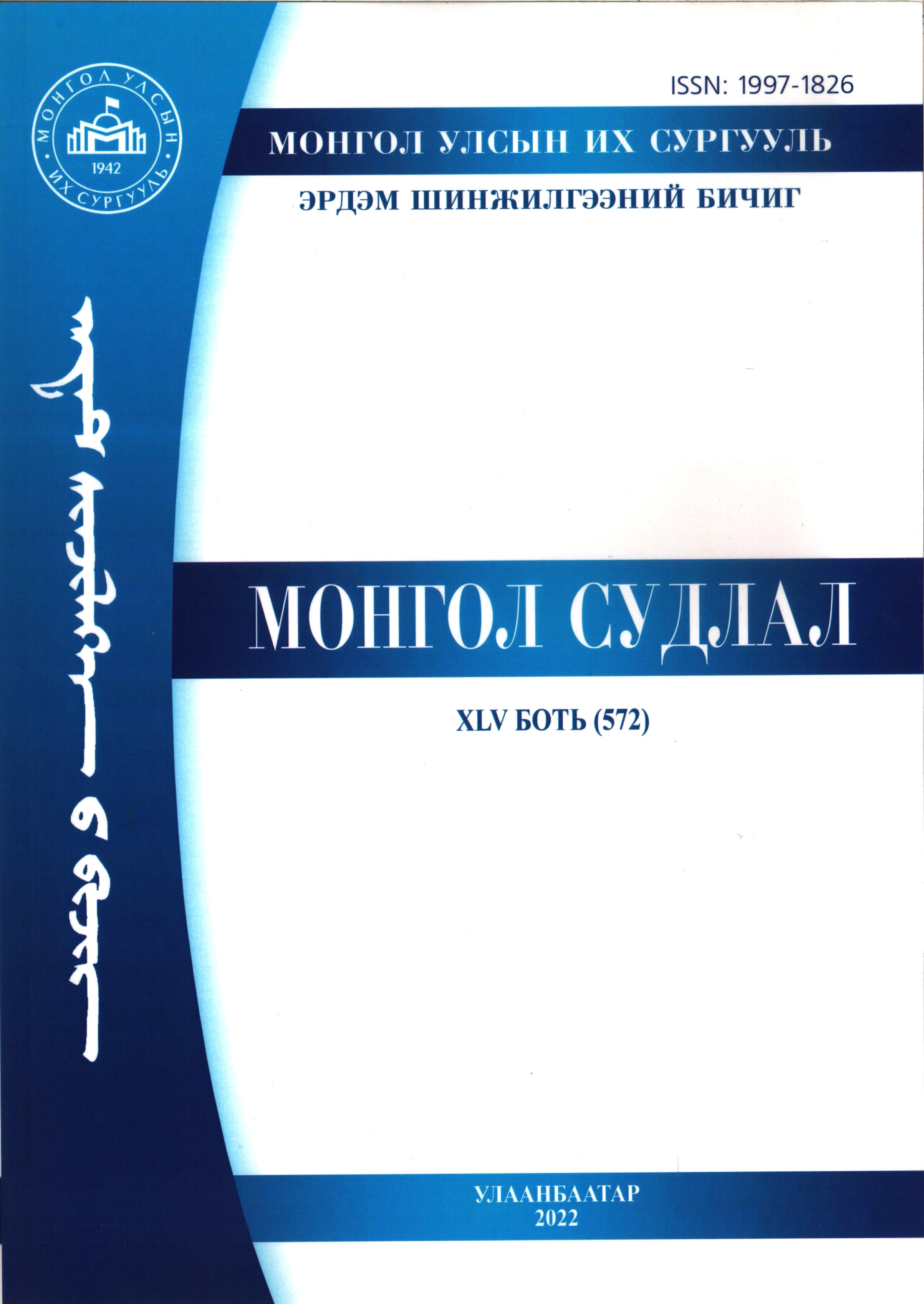Бэнсэн үлгэр дэх зарим хятад зээллэг үгийг тодлох нь (Бүрэнбаярын хуурдсан “Гурван улсын үлгэр”-ийн жишээн дээр)
Abstract
Oral tales, which are known as “tales of the fiddle” (quγur-un üliger or bengsün-ü üliger) derived in the eastern part of Inner Mongolia, are well-inherited to this day and have been the focus of many Mongolist scholars since long ago. We chose the “Romance of the Three Kingdoms (in Mongolian: γurban ulus-un üliger; in Chinese:三国演义)” which was performed by Bürenbayar bard (quγurči, Lit: the fiddle player) as the main object of our research work. In August 1984, Bürenbayar, an important source of the Khorchin dialect, performed the tale of the fiddle “Romance of the Three Kingdoms” for a total of 62 hours on the Khulunbuir Radio - 8 - Committee. When we studied this tale of the fiddle from the perspective of the lexicological study, we revealed that the study of local/ regional dialects and loan words was still lacking in the research field of tales of the fiddle. it is considered that is needed to analyze and to give an adequate explanation for the borrowed words from the Chinese language to the Mongolian language inside “Romance of the Three Kingdoms” which was performed by the bard Bürenbayar. The 20 borrowed words, which commonly occur in other Mongolian dialects, are analyzed and explained based on Mongolian primary sources. All of the Manchu words within “Romance of the Three Kingdoms” which was performed by the bard Bürenbayar, were marked up and were eventually listed as 20 Manchu words. For listing it, the origin of that words and literature review was - 10 - introduced word for word. As a result, these words were considered several words which entered the Mongolian language according to cultural exchange between the Khorchin Mongolians and Manchu, and concluded that some words entered the Mongolian language in ancient times. Each borrowed word is considered to be an effort to adapt and socialize the relations of each member of the society in accordance with the traditional culture, customs, and way of life of each nation and ethnic group. The first appendix part included all 685 words which were explained one by one in this research work. Especially, every word was transcribed by Mongolian script and international phonetic transcription, and every borrowed word was explained by words of the source language and was arranged according to the structure of our research work.





